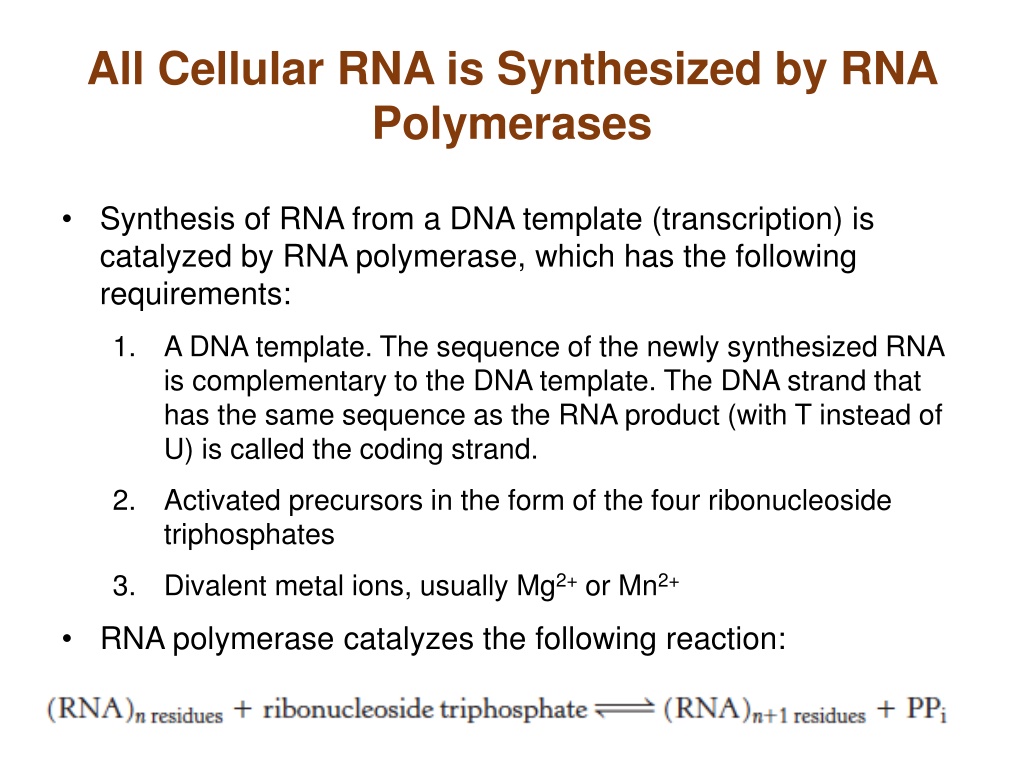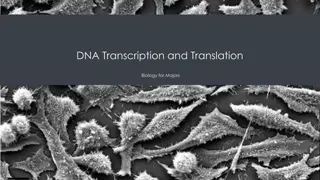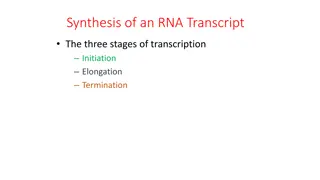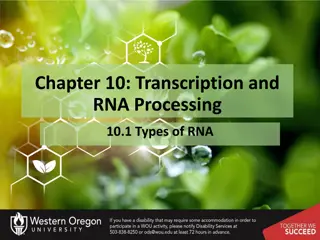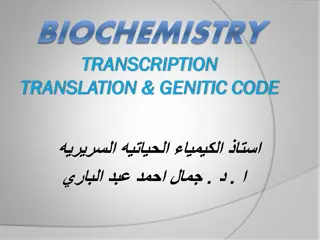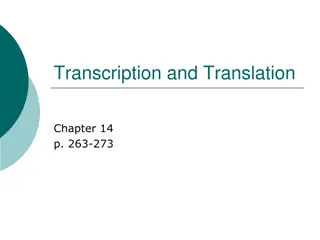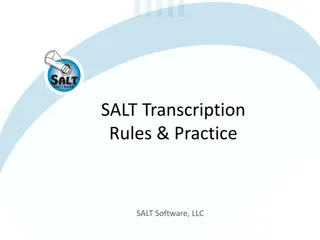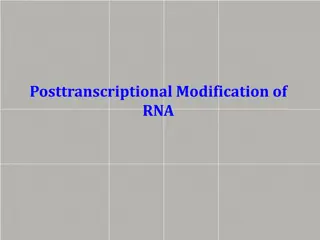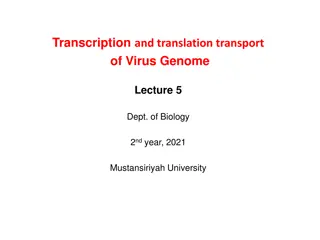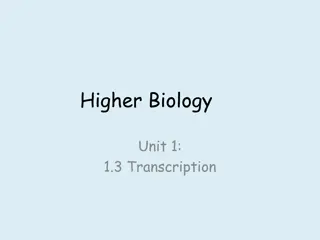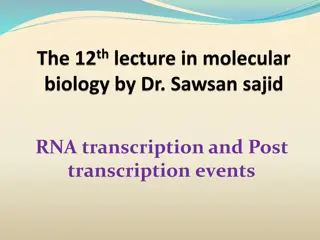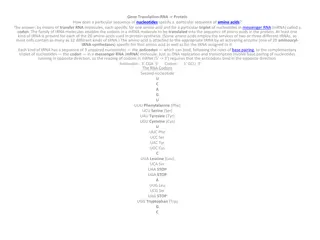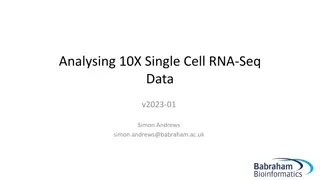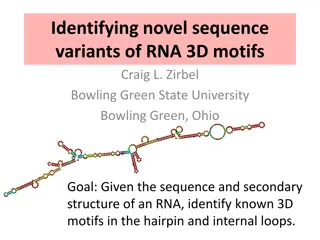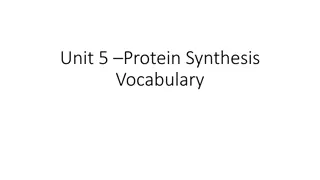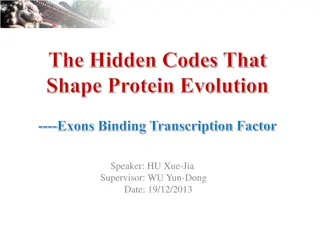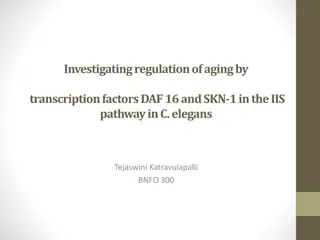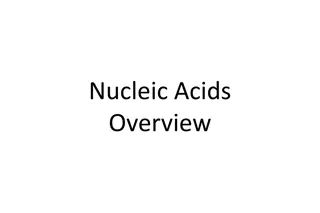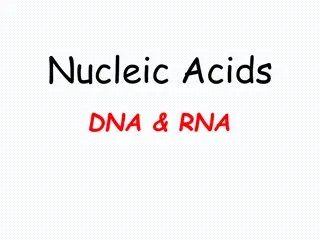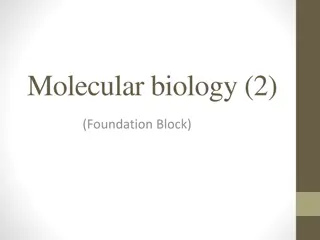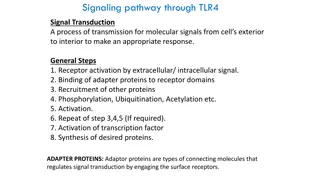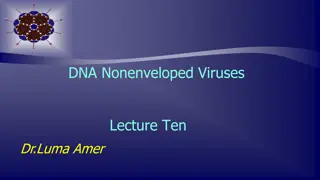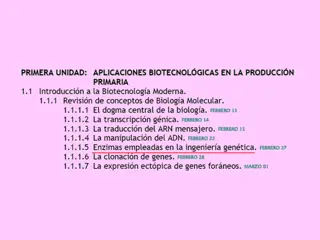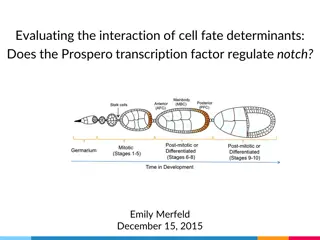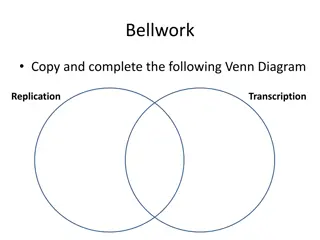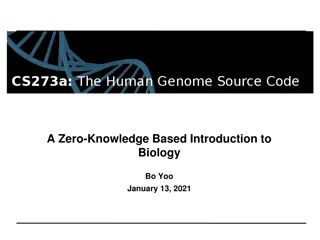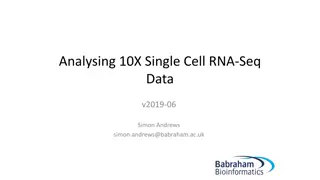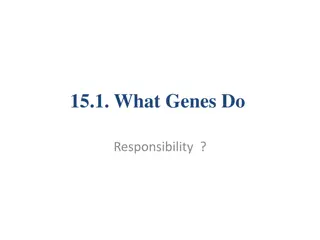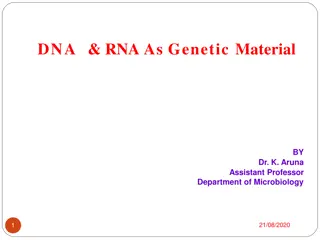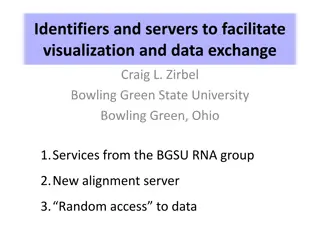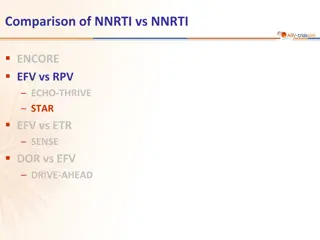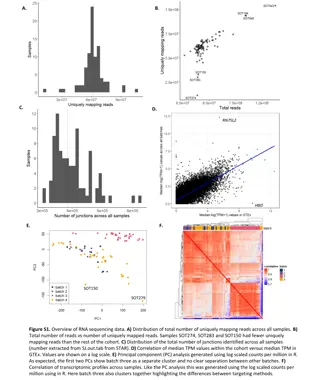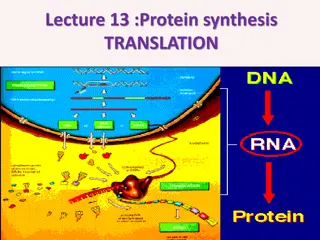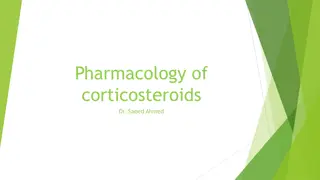Understanding RNA Polymerases and Transcription Process
RNA polymerases play a crucial role in synthesizing cellular RNA through transcription, where RNA is created from a DNA template. This process involves specific requirements such as a DNA template, ribonucleoside triphosphates, and divalent metal ions. RNA polymerase catalyzes the initiation and elongation of the RNA chain without the need for a primer. Specific subunits like sigma are essential for transcription initiation at promoter sites. The process starts near promoter sequences and ends at terminator sites, which are specific DNA regions directing RNA polymerase. Promoters show variations, with consensus sequences representing average variations.
Download Presentation

Please find below an Image/Link to download the presentation.
The content on the website is provided AS IS for your information and personal use only. It may not be sold, licensed, or shared on other websites without obtaining consent from the author. Download presentation by click this link. If you encounter any issues during the download, it is possible that the publisher has removed the file from their server.
E N D
Presentation Transcript
All Cellular RNA is Synthesized by RNA Polymerases Synthesis of RNA from a DNA template (transcription) is catalyzed by RNA polymerase, which has the following requirements: 1. A DNA template. The sequence of the newly synthesized RNA is complementary to the DNA template. The DNA strand that has the same sequence as the RNA product (with T instead of U) is called the coding strand. 2. Activated precursors in the form of the four ribonucleoside triphosphates 3. Divalent metal ions, usually Mg2+or Mn2+ RNA polymerase catalyzes the following reaction:
RNA Polymerase RNA polymerase initiates and elongates the RNA product, with the chain growing in the 5 -to-3 direction. No primer is needed. The 3 OH of the growing chain attacks the innermost phosphoryl ( ) group of the incoming ribonucleoside triphosphate.
RNA Polymerase RNA Polymerase (RNAP) PDB ID Codes: 2O5I: Crystal structure of the Thermus thermophilus RNA polymerase elongation complex 1L9Z: Thermus aquaticus RNA Polymerase Holoenzyme/Fork- Junction Promoter DNA Complex at 6.5 A Resolution 2A69: Crystal structure of the Thermus Thermophilus RNA polymerase holoenzyme in complex with antibiotic rifapentin 2O5I
RNA Polymerase Sigma subunits are critical to start transcription 1IW7 2A69 2O5I The Holoenzyme (1IW7) (The initial assembly on the promoter) 459 kDa subunits The Core Enzyme (2A69) (The functional assembly) 389 kDa subunits Note no sigma!
Sigma Subunits are Promoter Specific The most prevalent is 70
Transcription Begins Near Promoter Sites and Ends at Terminator Sites Promoters are specific DNA sequences that direct RNA polymerase to the proper initiation site. There are often variations in the sequence of a promoter for different genes. The average of such variation is called the consensus sequence.
Promoter Sites for Transcription in Prokaryotes and Eukaryotes
Promoters: RNAP Binds to Specific Sites on the DNA DNA is a duplex: Antisense Strand: Strand that is transcribed Sense Strand: The coding strand, has the same sequence as the transcribed mRNA
Promoters: RNAP Binds to Specific Sites on the DNA Promoters are 40bp sequences BEFORE the transcriptional start site (+1 site) There is some variation in the -35 region, and almost none in the Pribnow box The distance between the -35 and -10 regions is ABSOLUTELY CRITICAL Mutation changes the affinity of RNAP for the DNA Normally 1x10-14 M Binding of RNAP to the promoter melts the DNA through the Pribnow box
Transcription Mechanism of the Chain- Elongation Reaction Catalyzed by RNA Polymerase The reaction is driven thermodynamically by the hydrolysis of pyrophosphate.
Structure of E. coli RNAP and Mode of Action See? The sense strand going over the surface of the protein
Termination of Transcription Two methods: Rho independent and Rho- dependent
A Hairpin Structure at the 3 End of an E. coli mRNA Transcript
Rho-Dependent Termination of Transcription The Rho protein is a helicase that loads onto DNA at specific sites (Rho Utilization Sites, RUT)
